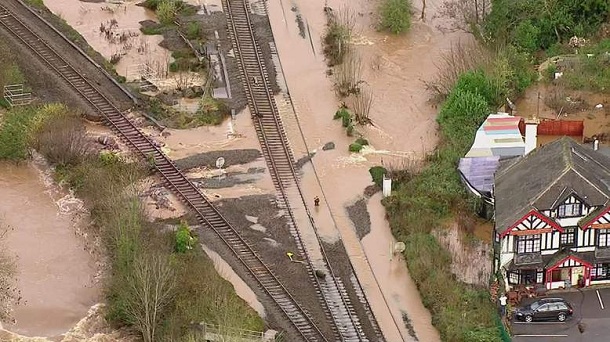Rain-battered Britain is struggling to cope with rising flood levels after further heavy rain brought misery to thousands of residents and motorists across the UK.
Householders have already evacuated over 900 properties after deluges left many properties uninhabitable and caused road and rail chaos.
Hundreds of people were urged to flee their homes after the River Elwy reached record levels and surged through flood defences into the beleaguered city of St Asaph in North Wales.
The torrential downpours spread overnight from the South West to North Wales and northern England. Leading to he Environment Agency issuing more than 200 flood warnings and almost 300 flood alerts across the UK.
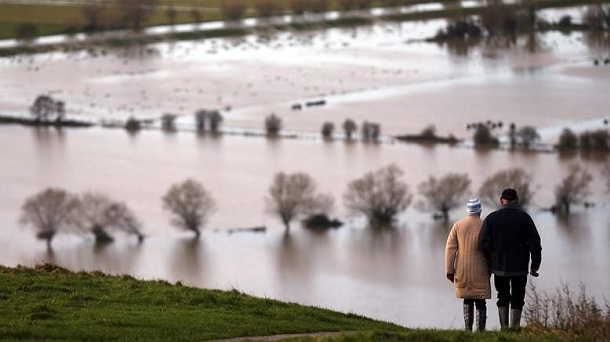
Residents in St Asaph say they do not remember the area flooding so badly since the 1960s. Some have used canoes to salvage as many possessions as they could carry.
Resident Vincent Jones was asked to leave his home in the early hours of the morning. He said: “I had a knock at 12.30am to say there was an imminent flood, and then at 4.30am we were told to leave.
“When I left, within an hour the water had engulfed us. I put some personal possessions upstairs and made sure we took the children to safety. My sister-in-law on the other side of St Asaph has taken the kids in.
“I’m absolutely devastated. I don’t have insurance. It doesn’t bear thinking about at the minute. My kids are safe, we’ll just have to plod on and sort it out one way or another.”
The Environment Agency says that flood defences in St Asaph which were designed to cope with up to 4m (13ft) of water, appear to be holding.
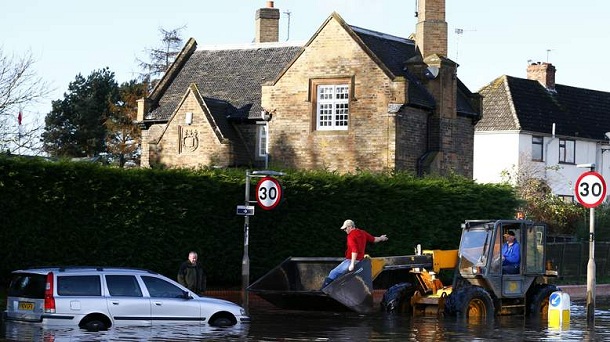
Environment Secretary Owen Paterson has expressed sympathy with residents but said most of the flood defences around the UK had held up well.
“We offer our sympathies to all those affected. I did see that our flood schemes in the South West are protecting properties. Six thousand key properties were protected in Exeter despite a torrent of water. Fifteen thousand properties in the country are being protected.
“We’re spending £2.17bn on flood defences over this spending round. We’ve opened up new arrangement partnerships with local councils and these flood schemes provide real benefits.
“It’s bitterly disappointing and awful for residences who feel safe behind defences which then fail. I can’t comment on what’s happened in St Asaph because I need to get the details of what’s happened there.
“The vast majority of the schemes we’ve built are designed to withstand floods except under extraordinary circumstances.”
But Mr Paterson added that the current system for insuring people against floods is flawed, after claims that hundreds of thousands of homes could be left without flood cover due to a row between ministers and the insurance industry over how future flooding bills would be covered.
He also criticised the way insurance companies have raised the issue.
“We’re trying to come up with an improved system that gives affordable and universal insurance which isn’t a huge burden on the taxpayer.
“We’ve been involved in detailed negotiations with the Association of British Insurers (ABI), but it was unhelpful of them to throw this into the mix yesterday when people were still struggling to recover from the flooding.”
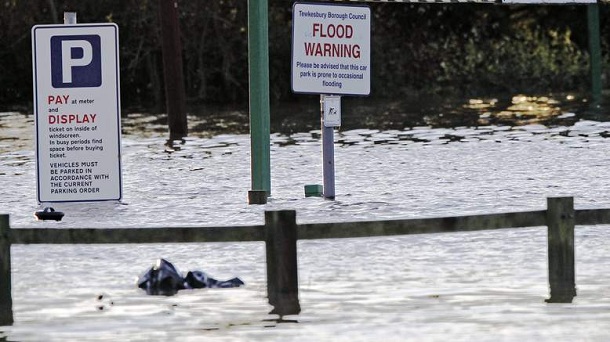
The ABI had claimed that talks about a “safety net” deal to ensure those in flood-risk areas can continue to afford their policies were at “crisis point”.
Graeme Trudgill from the British Insurers Brokers Association said the solution could lie in insurers themselves being insured.
“The insurance brokers we represent want to find a solution. It’s a question of getting government and insurers to find the right balance.
“Flood mapping technology is so advanced now we can tell which properties are at risk of flooding and we can insure 98% of the properties in the UK. It’s the top 200,000 properties that are very high risk.
“Specialist brokers can insure most of them but it’s a case of those properties working with their broker and agreeing to things like air-brick covers on their properties so they’re prepared if the worst happens.
“We’re looking at a re-insurance solution to provide insurance for the insurance companies. We’re confident that next year there will be some broker solutions in place.
Flood levels are continuing to rise in the worst hit areas across the UK despite the forecast of drier spells.
Sky’s weather presenter Isobel Lang, said: “Drier weather is on the way. That is definitely welcome news after the exceptional rain of the last few days. However the flood risk will not go away.
“Some slow responding rivers such as the Severn, Trent and Thames will continue to rise over the next day or two leading to local flooding problems.
“Areas with high ground water could still experience flooding, and Dorset is a county at risk. There is still a risk of river or surface water flooding across northeast England, north Wales and Northamptonshire, too”.
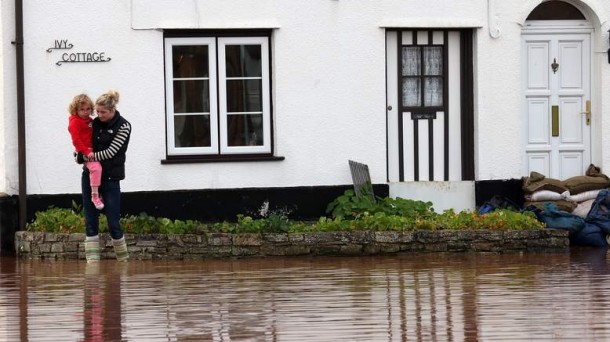
Across the UK, three people have died in the flooding and around 900 homes have been evacuated following a weekend of almost non-stop rain.
There is still a risk of flooding, as the heavy rain in northern England and Wales moves southwards. But the wind and rain are expected to ease over the next few days which are expected to be drier, with freezing temperatures taking hold of the UK instead.
The EA remains particularly concerned about the River Thames, Trent and the Severn, as well as the Northamptonshire area.
The A417 at Maisemore has already flooded and is closed, while the River Severn at Tewkesbury is expected to peak at 4.8m – a metre less than its peak in 2007.
[adrotate banner=”46″]

